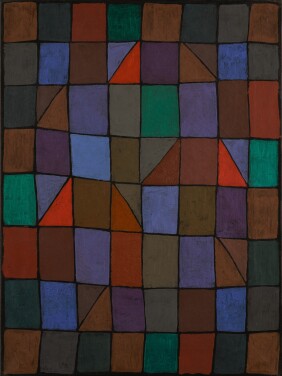Works by Paul Klee at Sotheby's
Paul Klee Biography
Although most closely connected with the Bauhaus School and Der Blaue Reiter (The Blue Rider) group, the work and color theory developed by Paul Klee has been cited as one of the greatest influences on subsequent movements, including the Surrealists, Abstract Expressionists and Color Field painters.
Born on December 18, 1879, in Switzerland to a family of musicians, music would become one of Klee’s greatest sources of inspiration. After training in painting in Munich, and a trip to Italy to study the Old Masters, Klee settled in Bern, Germany in 1902 when he began his professional career, beginning primarily as an etcher. In 1911, he became acquainted with several key avant-garde artists, including Vasily Kandinsky and Franz Marc, which led to Klee showing work in several seminal exhibitions such as the second Blaue Reiter exhibition in 1912. The same year he visited Paris where he was introduced to the work of Georges Braque and Pablo Picasso, as well as met Robert Delaunay. In 1914 he travelled to Tunisia, a trip that would prove exceedingly formative in his practice; subsequently, color and color theory would become the fundamentals of his art. Marked by delicate line work and bright, sometimes cacophonous, color, Klee’s work is largely playful and even satirical.
Klee was granted a professorial appointment at the influential Bauhaus in Weimar, and subsequently in Dessau until 1931. Klee also taught at the Akademie in Dusseldorf until 1933, after which the Nazis forced him to leave his position. Seventeen works by Klee were shown in the infamous Nazi exhibition of “degenerate” art in 1937. Although Klee was not politically inclined, the art he produced in the later years of his career exemplify his disappointment and preoccupation with malevolent forces; his use of line became increasingly crude, and his subject matter more macabre. Klee remained highly productive until his death in Switzerland in 1940. Many important institutions, including the Kunstmuseum Basel; Fondation Beyeler, Basel; the Guggenheim Museum, New York; and Tate Modern, London, have works by Klee in their collections.












